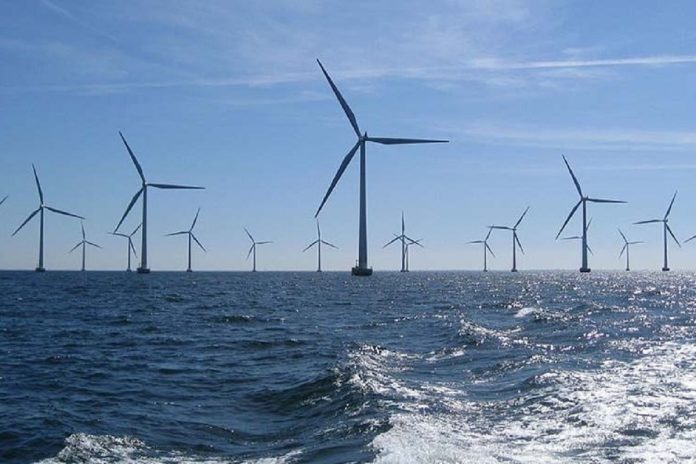Nine new countries have joined an international alliance at the United Nations-Conference of Parties (UN-COP27) climate summit, pledging to a rapid ramp up of offshore wind power, in order to tackle the climate and energy security crises.
The Global Offshore Wind Alliance (GOWA) was initiated in September 2022 by the International Renewable Energy Agency (IRENA), Denmark and the Global Wind Energy Council (GWEC).
It aims to drive installed global offshore wind capacity up by 670 per cent — from 57 GW in 2021 to 380 GW in 2030.
The countries which joined GOWA on Tuesday (9 November) include Belgium, Colombia, Germany, Ireland, Japan, the Netherlands, Norway, the United Kingdom, and the United States of America.
Offshore wind energy is the clean and renewable energy obtained by taking advantage of the force of the wind that is produced on the high seas, where it reaches a higher and more constant speed than on land due to the absence of barriers.
Electricity produced by offshore wind turbines travels back to land through a series of cable systems that are buried in the sea floor.
Offshore wind can be deployed at large scale, in short timeframes and at competitive cost.
The Plan
According to forecasts by IRENA and the International Energy Agency (IEA), offshore wind capacity will need to “exceed 2000 GW in 2050, from just over 57 GW today”, to limit the rise in global temperatures to 1.5 degree Celsius above pre-industrial era.
This is why a new multi-stakeholder alliance has been created whose ambition is to create a global driving force for the uptake of offshore wind, through political mobilisation and the creation of a global community of practice.
The aim of GOWA is to contribute to achieving a total global offshore wind capacity of a minimum of 380 GW by 2030, with 35 GW on average each year across the 2020s and a minimum of 70 GW each year from 2030, culminating in 2,000 GW by 2050.
Individual Efforts
Germany, which is the third-biggest offshore wind power producer in the world, plans to leverage the know-how and skills in the offshore space and help other countries in building or increasing their own offshore wind power generation capacity.
Similarly, Belgium is accelerating the energy transition with quadrupling the offshore wind capacity by 2040, building a hybrid energy island, as well as new interconnections with North Sea countries.
Belgium, Denmark, Germany, Ireland, the Netherlands, and Norway, together with three more partner countries in the North Seas Energy Cooperation (NSEC), also recently agreed to reach at least 260 GW of offshore wind capacity by 2050.


